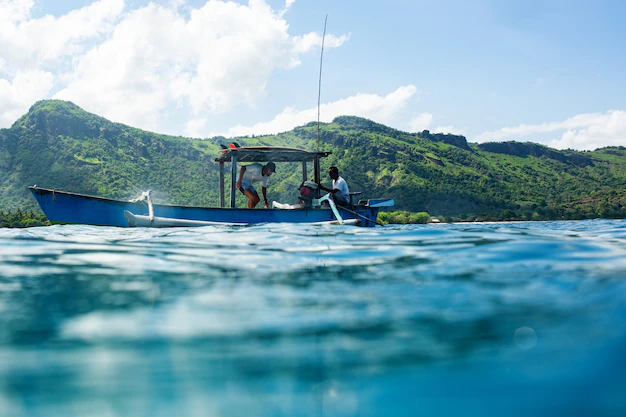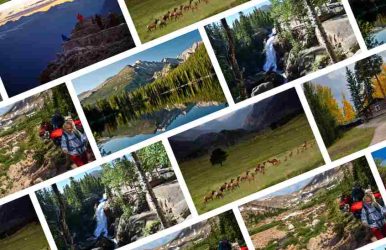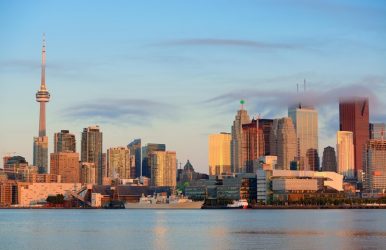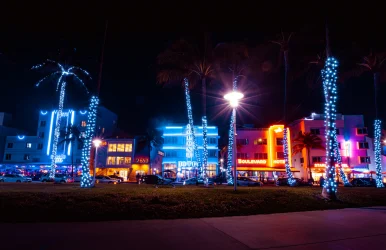Things To Do In Rocky Mountains National Park
BY Nabamita Aug 4, 2022
“Things to do in rocky mountains.” As you are searching about this particular thing, I am assuming that you might be planning your next holiday in the Rocky mountains. We never want to ruin our vacations or trips and that is why we always search on Google and gather as much knowledge as we can. From the best seasons, to where to stay, you should know everything. But as you are particularly searching for the fun things you can do in the Rocky mountains, here we are with the solution. With majestic landscapes, with rough terrains on one side and alpine forests and lakes on the other side. The Rocky Mountains National Park is a heaven for scenic beauty, wildlife, and mesmerizing waterfalls and lakes. Fun Facts About The Rocky Mountain National Park: It was on 26th January 1915, when the Rocky Mountain National Park was first established. For about 415 square miles, the park encompasses. Just a short drive from Denver, Colorado, the national park is one of the most parks in the US. Here are a few things to do in Rocky Mountains. About 4.5 million people visited in 2016 for a “World-class recreation” opportunity. This ranged from biking, hiking, fishing, camping, mountaineering, and horseback riding. The Rocky Mountain National Park is the highest park in the Country at an elevation of about 7,860 ft to 14,259 ft. The Rocky Mountains are more than just rough terrain; it has an alpine tundra ecosystem along with a montane ecosystem. These ecosystems have the widest variety of wildlife and plant diversity. The trail ridge road of the park offers an awe-struck vision even before it was travel worthy. It was called the “scenic wonder road of the world.” Most of the park is designated to be a part of the wilderness. There are about 250,00 acres of about designated wilderness according to Congress 2009. The Rocky Mountains have an extensive collection of museums. These museums collect the artifacts of the forest that defines the park and its history. Things To Do In Rocky Mountains National Park The Rocky Mountain National Park is a large area with thousands of acres. So it is obvious that there are a lot of things to do there. But if it’s your first time visiting, then I have a list of things for you to do there. 1. Drive Trail Ridge Road If you have ever visited the Rocky Mountains or not, then let me tell you that trail ridge road is the highest in the US, not only in Colorado. The road is about 48 miles long and stretches from Estes Park to Grand Lake. The road is beautiful for a long drive through it. It is surrounded by alpine tundra, and there is a chance you might see bighorn sheep or elks. This amazing wildlife out in the open is what makes driving the trail roads the best things to do in the rocky mountains, colorado. So, this is a must when you are thinking about “things to do in rocky mountains.” 2. Forest Canyon Overlook The are many beautiful overlooks along the trail ridge road. But this one, in particular, located along the trail ridge road, is just beautiful. The overlook is about 11,716 ft high, looking the Long s Peak, Hayden Gorge, Gorge Lakes, and Stones Peak. 3. Go Hiking What can be better than hiking along the beautiful trails of the Rocky Mountains? There are a number of trails throughout the Rocky Mountains, and you can go on to any, depending on your expertise. Hiking is the most popular and one of the best things to do in Rocky Mountains, Colorado. Here are some of the best trails along the RMNP are: Alpine Ridge Trail for a short hike to a viewpoint of the mountains. It is an easy hike for beginners. Gem Lake trail is a moderate-level hike. It gives a wonderful view of the alpine lake. Ute Trail to Tombstone Ridge is an easy to moderate level hike. It is among the more popular hikes among hikers. 4. Bear Lake Another one that you can add in your “things to do in rocky mountains- list” is Bear lake. Bear lake is among the most popular shorter hike, but it's worth it. The hike is about 0.6 miles long, with a beautiful view of the lake surrounded by trees. A walk around the lake is just beautiful for your body and soul. 5. Alberta Falls There are beautiful falls all around the RMNP where you can have a relaxing afternoon and a quaint picnic. One such fall is the Alberta falls; with a beautiful scenic beauty amidst nature, you can really enjoy your time here. The hike to the falls is about 1.7 miles hike which is not too strenuous and quite easy. But I should point out that you have to walk uphill from the Glacier Gorge to reach the falls. 6. Moraine Park If you love the aesthetic of sitting on a blanket and having a beautiful picnic in the open, then Moraine Park is the best place for you. It is one of the best things to do in rocky mountains. Here, you can gaze upon the wonderful wildlife grazing in the valley, like Elks and deers. And most of the mountain trails start from the park here. 7. Holzwarth Historic Site In 1917, immigrants from Germany, John Holzworth, along with his family, built a cabin here. Gradually over the years, they built several cabins for guests. In 1974, their property was bought by The Nature Conservancy, and since then, it has become an integral part of the park. The site became a popular tourist spot for visitors to learn about the life of the Colorado homesteaders. 8. Go Mountaineering For years now, rock climbing and mountaineering have been popular adventure sports in the Rocky Mountain National Park. Numerous mountain peaks over the height of 12,000 ft have intrigued a lot of avid rock climbers from all around the world. Different types of climbing experiences, from vertical climbs, to multi-day and even easy climbs, are all available here. Even during the winter months, for experienced climbers, ice climbing is also an option. Mountaineering is among the most popular things to do in Rocky Mountains. Frequently Asked Questions (FAQs): Though most of the things to do in rocky mountains are listed above. To help you with further queries, here are some questions that people often ask. 1. How Many Days Do You Need To See Rocky Mountain National Park? Ideally, it would take about three days to travel and explore the whole of Rocky Mountain National Park. Within that time, you can visit all the attractions of the place. 2. Is It Worth Driving Through Rocky Mountain National Park? The ride through the Rocky Mountain National Park is beautiful and gives a wonderful view of the park. 3. How Scary Is Trail Ridge Road? Since it is a mountain trail road, you can imagine the height of the road. So if you have a phobia of heights, then take caution in advance. However, the mountain road is less scary than most Colorado mountain roads. Wrapping Up! It is a reason why Rocky Mountain Nature Park is popular among tourists from all over the world. There are lots of things to do in rocky mountains that you can expereince. The beautiful valley road, with scenic parks and wildlife with lakes and waterfalls are really mesmerizing. Altogether these things are what make the mountain a highly popular attraction among tourists. Read Also : 10 Best Things to Do in Prague 10 Best Things to Do in Phoenix(Arizona) 10 Best Things to Do in Barcelona (Spain)












